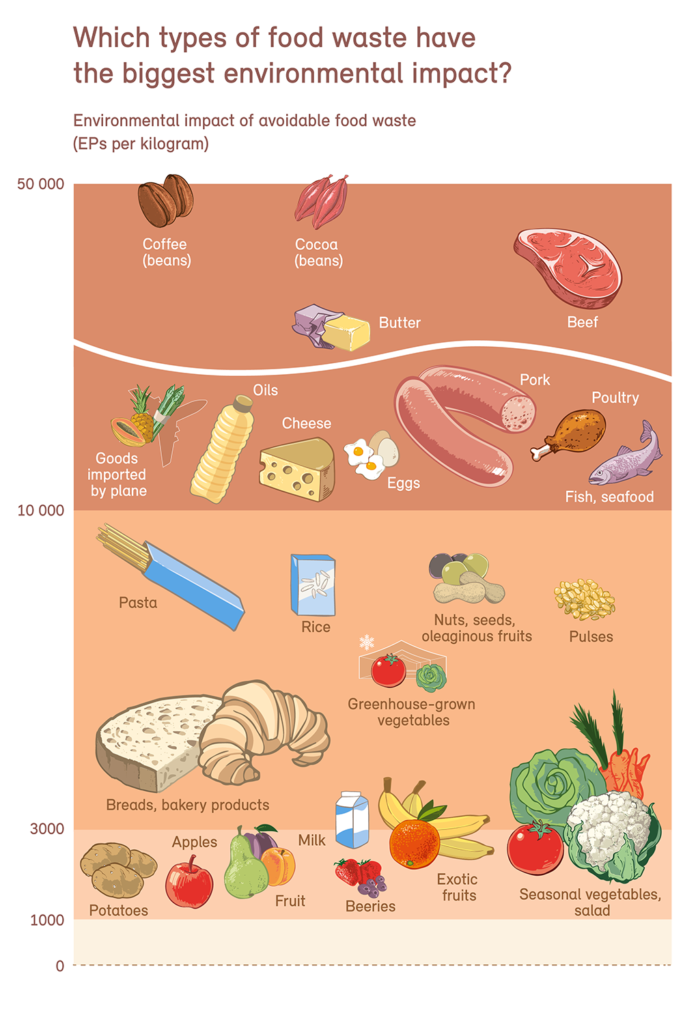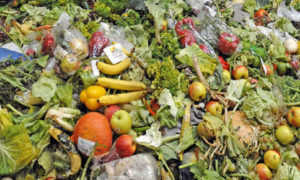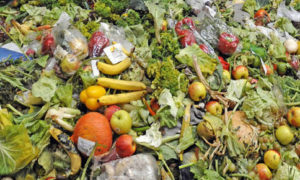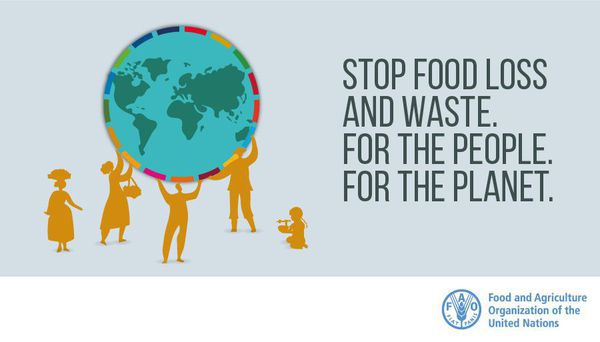Update
Reducing Food Loss and Waste for a Healthier Planet
Across global food systems, food loss and waste is a widespread issue, posing a challenge to food security, food safety, the economy, and environmental sustainability. Actions are required globally and locally to maximize the use of the food we produce. The introduction of technologies, innovative solutions, new ways of working and good practices to manage food quality and reduce food loss and waste are key to implementing change.
The pandemic has exposed the fragility of our food supply systems, from complex value chains to impacts on our ecosystems. But it has also demonstrated that businesses and people are ready to build back better. This crisis offers us a chance to radically rethink how we produce and consume food. For example, reorienting consumption by halving food waste and catalyzing a shift towards more plant-rich diets, is also a powerful climate mitigation tool to take advantage of. It is up to us to seize this opportunity and put sustainable food systems at the heart of the green recovery.
– Inger Andersen, Executive Director of the United Nations Environment Programme (UNEP), September 2020
Reducing food losses and waste is critical to achieving the sustainable development goals. According to the United Nations and the Food and Agriculture Organization (FAO), globally, around 14% of food produced is lost between harvest and retail. Significant quantities are also wasted in retail and at the consumption level. Around 38% of total energy consumption in the global food system is also utilized to produce food that is either lost or wasted. In addition, it takes seeds, soil and the labor of farmers to produce food, not to mention the fuel that is needed to transport it. All of these resources are lost when food is wasted.
Furthermore, the disposal of food loss and waste in landfills leads to greenhouse gas emissions, contributing to climate change. Policymakers can improve the chances of achieving climate goals and limiting global warming to 1.5°C by making more specific commitments to transforming national food systems.
According to the new report “Enhancing Nationally Determined Contributions (NDCs) for Food Systems” published by WWF, UNEP, EAT and Climate Focus, countries are missing significant opportunities to reduce greenhouse gas emissions and identifies 16 ways policymakers could take more action, from farm to fork.
World Food Day
16 October is World Food Day and we all have a role to play to realize the vision of a world without hunger and malnutrition. We must not let sustainable habits fall by the wayside in times of crisis. We can make healthy food choices and do our part to reduce food waste. In addition, governments, enterprises, and organizations can share their knowledge and support sustainable, resilient food systems and livelihoods. Together, we can grow, nourish, and sustain our world.
Celebrated under the theme “Grow, Nourish, Sustain. Together. Our Actions are our Future” will mark the 75th anniversary of the founding of FAO. World Food Day 2020 and FAO’s 75th Anniversary is being marked during a very exceptional time as many countries are dealing with the widespread effects of the COVID-19 pandemic. World Food Day should, as a result, be considered as an opportunity to call for global cooperation and solidarity to make sure that the threats COVID-19 is posing to food security and agricultural livelihoods are confronted and the most vulnerable are able to get back on their feet. It is also an occasion to sensitize the public on how everybody has a role to play in transforming our food systems by changing the way we produce, transform, consume and waste our food.
International Day of Awareness of Food Loss and Waste Reduction
On 29 September 2020, the UN celebrated the first observance of the International Day of Awareness of Food Loss and Waste, recognizing the fundamental role that sustainable food production plays in promoting food security and nutrition.
It also comes during the global COVID-19 pandemic that has brought about a global wake-up on the need to transform and rebalance the way our food is produced and consumed. The pandemic continues to generate significant challenges to food security in many countries. Disruptions in supply chains, quarantine measures, the closure of much of the hospitality industry and schools have resulted in a loss of markets for producers and distributors, making the situation even more challenging while dealing with high levels of food waste.
At the downstream end of the supply chain, with panic buying and stockpiling by consumers, supermarkets, which are often key donors to food banks, struggled to keep their shelves stocked and are unable to donate food. Meanwhile, much of the food purchased by households was discarded as food waste because of a misunderstanding of date marking and improper storage of these household food items.
We need to be aware of the importance of the issue of food loss and waste in order to promote and implement our global efforts towards resolving it.
Impact on the Environment
According to FAO, the global volume of food wastage is estimated at 1.6 billion tonnes of “primary product equivalents.” Total food wastage for the edible part of this amounts to 1.3 billion tonnes. This has an impact on the environment:
- Food wastage’s carbon footprint is estimated at 3.3 billion tonnes of CO2 equivalent of GHG released into the atmosphere per year.
- The total volume of water used each year to produce food that is lost or wasted (250km3) is equivalent to the annual flow of Russia’s Volga River, or three times the volume of Lake Geneva.
- Similarly, 1.4 billion hectares of land (28% of the world’s agricultural area) is used annually to produce food that is lost or wasted.
- Agriculture is also responsible for a majority of threats to at-risk plant and animal species tracked by the International Union for Conservation of Nature (IUCN).
- A low percentage of all food wastage is composted. Much of it ends up in landfills and represents a large part of municipal solid waste. Methane emissions from landfills also represent one of the largest sources of GHG emissions from the waste sector.
The later food is wasted along the chain, the greater its environmental impact because we have to take into consideration the energy and natural resources expended in processing, transporting, storing and cooking food. Food waste that ends up in landfills produces a large amount of methane – a more powerful greenhouse gas than even CO2. For the uninitiated, excess amounts of greenhouse gases such as methane, CO2 and chloroflurocarbons absorb infrared radiation and heat up the earth’s atmosphere, causing global warming and climate change.
With agriculture accounting for 70% of the water used throughout the world, food waste also represents a great waste of freshwater and ground water resources. It is said that a volume of water roughly three times the volume of Lake Geneva is used just to produce food that is not eaten. By throwing out one kilogram of beef, you are essentially wasting 50,000 liters of water that were used to produce that meat. In the same way, nearly 1,000 liters of water are wasted when you pour one glass of milk down the drain.
If you look at land usage, around 1.4 billion hectares of land, roughly a third the world’s total agricultural land area, is used to grow food that is wasted. Millions of gallons of oil are also wasted every year to produce food that is not eaten. All these do not even take into account the negative impacts on biodiversity due to activities like monocropping and converting wild lands into agricultural areas.
In “Enhancing Nationally Determined Contributions (NDCs) for Food Systems” it indicates that all the elements and activities that relate to the production, processing, distribution, preparation and consumption of food account for up to 37% of all greenhouse gas emissions; continuing on a business-as-usual trajectory will single-handedly exhaust the 1.5°C compatible emissions budgets for all sectors. Although 89% of NDCs mention agriculture production, agriculture emissions reduction targets are mainly included in wider land-use targets. More notably, other actions in the food system, such as reducing food loss and waste, or shifting to more sustainable diets, are widely ignored, despite presenting the combined opportunity to reduce emissions by as much as 12.5 Gt CO2e – the equivalent of taking 2.7 billion cars off the road.

Environmental impact in eco-points (EPs) per kilogram of avoidable food waste in households and the catering industry. The higher up the chart the category is, the greater the environmental impact per kilogram. Reusing food waste may mean that less animal feed, compost, etc. has to be produced. The environmental benefits of these savings have been taken into account in the calculation and in the chart. Image from the Swiss Federal Office for the Environment (FOEN).
Sustainable Development Goals
The Sustainable Development Goals are a universal call to action to end poverty, protect the planet and improve the lives and prospects of everyone, everywhere.
Sustainable Development Goal 12’s target is to ensure sustainable consumption and production patterns, which contains a wide range of targets related to food waste. SDG Target 12.3 seeks to:
By 2030, halve per capita global food waste at the retail and consumer levels and reduce food losses along production and supply chains, including post-harvest losses.
In order to measure food waste and losses, two indices have been proposed.
Sub-Indicator 12.3.1.a – Food Loss Index
The Food Loss Index (FLI) focuses on food losses that occur from production up to (and not including) the retail level. It measures the changes in percentage losses for a basket of 10 main commodities by country in comparison with a base period. The FLI will contribute to measure progress towards SDG Target 12.3.
Sub-Indicator 12.3.1.b – Food Waste Index
A proposal for measuring Food Waste, which comprises the retail and consumption levels is under development. UNEP is taking the lead on this sub-indicator.
Actions
Actions are required globally and locally to maximize the use of the food we produce. The introduction of technologies, innovative solutions (including e-commerce platforms for marketing, retractable mobile food processing systems), new ways of working and good practices to manage food quality and reduce food loss and waste are key to implementing change.
To stop food waste, changes have to be brought in at every stage of the process – from farmers and food processors to supermarkets and individual customers. As a first step, priority should be given to balancing production with demand. This essentially translates to lesser use of natural resources to produce food which is not needed.
More efforts should also go into developing better food harvesting, storing, processing and distributing processes. If oversupply happens, steps should be taken to redistribute the food or to divert it to people who are in need. Additionally, the different actors can reduce their “food footprint” by identifying where waste occurs and taking steps to tackle the same. Fruits which are misshaped or “ugly” are not necessarily bad and can still be bought and used in dishes like soups.
Consumers should also try to buy food in accordance with a meal plan so that they don’t end up wasting edible food. Food may be cheaper when you purchase in bulk, but in reality, you are not really saving money when all you are doing is chucking it in the bin at the end of the week.
If the food still ends up unfit for human consumption, it can be used for feeding livestock, saving precious resources that would have otherwise been used for producing commercial feed. If the food cannot be reused at all, then we should at least try to recycle it in a responsible manner instead of sending it to the landfills where it continues to rot.
Nature-Based Solutions
According to the article “Hungry for change: the global food system” interviewing James Lomax of UNEP, the greatest challenges we face are practical issues with practical, nature-based solutions. They are entirely within our control, but require radical, transformative change.
The world already produces enough food to feed everyone on the planet. However, a third of this food is lost or wasted. More than half, 56%, occurs in developed countries, either in the supply chain or at consumption. The remainder, 44%, occurs in developing countries, as post-harvest loss – in storage, transport, packaging or other stages, before food reaches the table.
Although we produce large quantities of food, it is not sufficiently diverse or nutritious. Over the past 50 years, diets have become increasingly homogeneous, dominated by crops that are rich in energy, but poor in macronutrients. Of the thousands of plants and animals used for food in the past, less than 200 currently contribute to global food supplies and just nine crops account for almost 70% of all crop production. In many cases – and particularly in poor countries – people do not receive enough of the full range of nutrients essential to human health. In fact, low dietary diversity has surpassed caloric insufficiency as the primary driver of death.
As people become wealthier, they tend to adopt more resource intensive diets. Over 75% of all agricultural land is used for feed production, pasture and grazing for livestock. And the overuse of antibiotics – to promote livestock yield, survival and growth – has caused antimicrobial resistance in both humans and animals.
These are substantive issues and, while change will not be easy, the benefits are clear.
According to the EAT-Lancet Commission, moving toward “healthy diets – diets with a diversity of plant-based foods, low amounts of animal source foods, unsaturated rather than saturated fats, and limited amounts of refined grains, highly-processed foods and added sugars – could prevent between 19 and 24% of all adult deaths.”
Reducing food waste and shifting dietary patterns could potentially reduce anthropogenic greenhouse gas emissions from the food system by as much as 50%. And restoring biodiversity could strengthen the resilience of food systems, enabling farmers to diversify production and cope with pests, diseases and climate change.
Planet-Based Diet
According to WWF, eating a planet-based diet is high in human health benefits and low in environmental impacts. Adopting a planet-based diet can reduce:
- Food-based greenhouse gas emissions by at least 30%
- Wildlife loss by up to 46%
- Agricultural land-use by at least 41%
- Premature deaths by at least 20%
COVID-19: Reducing Food Loss and Waste
The COVID-19 pandemic continues to wreak havoc globally, generating significant challenges that could result in risks to food security and nutrition in many countries. Countries are ordering lockdowns, restricting movement and observing physical distancing to curb the pandemic. Disruptions in supply chains resulting from blockages on transport routes, transport restrictions and quarantine measures are resulting in significant increases in food loss and waste, especially of perishable agricultural produce such as fruits and vegetables, fish, meat and dairy products. In addition, labour shortages, owing to the restriction of movement of key stakeholders in production and transport, are significantly impacting food supply and demand owing to food shortages in some markets, further contributing to food loss and to the unnecessary waste of food supplies in these difficult times.
FAO encourages countries to adopt holistic approaches to tackle food loss and waste reduction, in an effort to facilitate access to food for all and particularly for vulnerable groups during the COVID-19 pandemic.
International Database
The Food Loss and Waste database is the largest online collection of data on both food loss and food waste and causes reported throughout the literature. The database contains data and information from openly accessible reports and studies measuring food loss and waste across food products, stages of the value chain, and geographical areas. In October 2019, more than 480 publications and reports from various sources (e.g., subnational reports, academic studies, and reports from national and international organizations such as the World Bank, GIZ, FAO, IFPRI, and other sources), which have produced more than 20,000 data points, were included. Data can be queried, downloaded, and plotted in an interactive and structured way. The database can be used by anyone who wishes to know more about food losses and waste.
Switzerland and Local Geneva
In Switzerland, the average annual food waste form farm to fork is of about 300 kg per capita (2,564,500 tonnes in 2019 according to Swiss Federal Office for the Environment), of which 90 kg per capita at the households level.
Switzerland and the Federal Office for the Environment
The Swiss Federal Office for the environment provides information on food waste in Switzerland. About 25% of the country’s nutrition-related environmental impact is caused by avoidable food waste. In 2013, the Swiss Federal Council adopted measures to reduce food waste as part of the Green Economy Action Plan. Among others, it has resulted in a stakeholder dialogue and the implementation of a number of initial actions. With the adoption of the Chevalley postulate (18.3829) on 5 March 2019, the National Council mandated the Federal Council to produce an action plan on food waste prevention.
Canton and City of Geneva
The Canton of Geneva imports approximately 80% of the commodities consumed by its population. The transport of food products is the third-largest flow of resources consumed in Geneva after building materials and energy products. The Canton de Genève provides resources on food waste and the City of Geneva lists tools on learning how to adopt to a local and sustainable approach to eating.
Zero Waste Geneva
Zero Waste Geneva is a community for those looking to reduce waste, preserve natural resources and create a more sustainable future! The organization offers workshops and resources on reducing food waste.
Partage
Partage is a food bank created in 2005 by the Salvation Army, C.A.R.E., Caritas Genève, les Colis du Cœur and Emmaüs. It salvages food waste and provides them to different beneficiaries.
Fédération Romande des Consommateurs (FRC)
FRC provides tools for consummers to avoid food waste.
WWF Switzerland
The Swiss organization of WWF provides resources and an app on food waste.
Learning

Course on SDG Sub-indicator 12.3.1.a – Food Loss Index
Learn about SDG target 12.3 and indicator 12.3.1.a and how it can inform food system policies, the importance of measuring and reporting on food losses at the country-level, key concepts and challenges in measurement. | Online | FAO

Food Loss Analysis E-learning course
The course aims to provide practical guidance, and quickly develop an understanding of the topic. | Online | FAO

Quiz gaspillage alimentaire
Testez vos gestes à prendre pour limiter le gaspillage alimentaire avec la FRC | Online | FRC
Resources
- SAVE FOOD: Global initiative on food loss and waste reduction | FAO
- Think. Eat.Save | UNEP
- Global food loss and waste | World Bank
- UNECE and the food loss challenge | UNECE
- Transformation of our food systems – the making of a paradigm shift | Hans R. Herren, Benedikt Haerlin and the IAASTD+10 Advisory Group | 28 September 2020
- Why sustainable food systems are needed in a post-COVID world | UNEP | 14 July 2020
- Food for thought: dietary changes can improve our health, health of planet | UNEP | 25 November 2019
- 15 quick tips for reducing food waste and becoming a food hero | FAO
- Lost food | Biovision
Local
- Food waste | Swiss Federal Office for the Environment
- The Swiss fight against food waste | Geneva Impact Hub | 20 April 2018
- Gaspillage alimentaire | FRC
- Alimentation durable | Geneva Canton
- A sustainable and locally-sourced diet | City of Geneva
- Partage food bank
- Clever: Sustainable consumption | Biovision
GEN activities on food waste
- World Environment Day 2013 in Geneva | Think.Eat.Save


